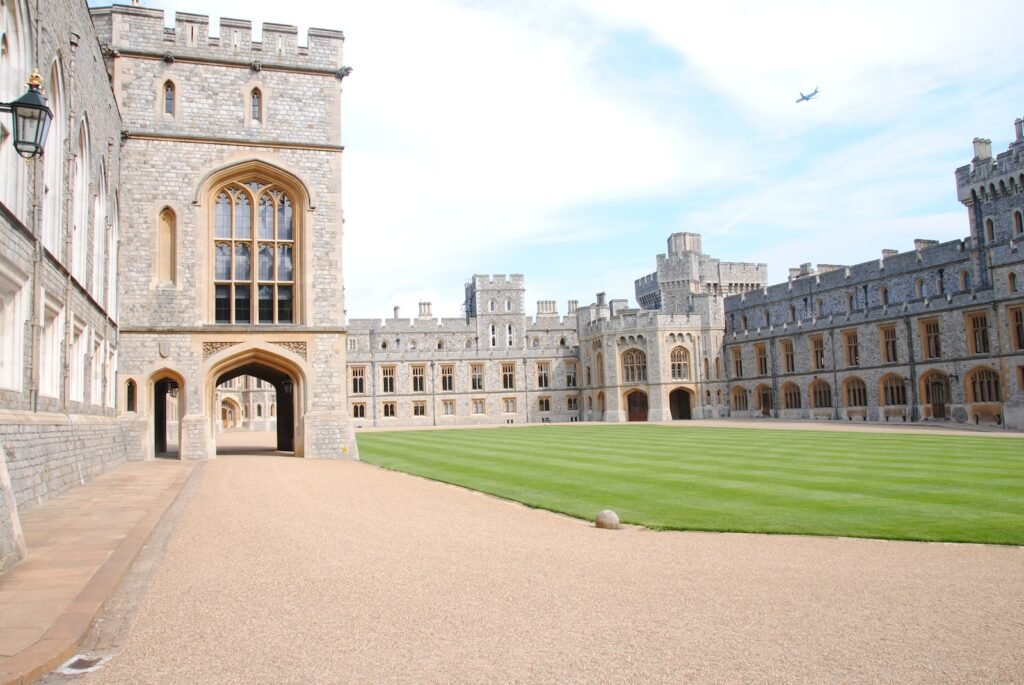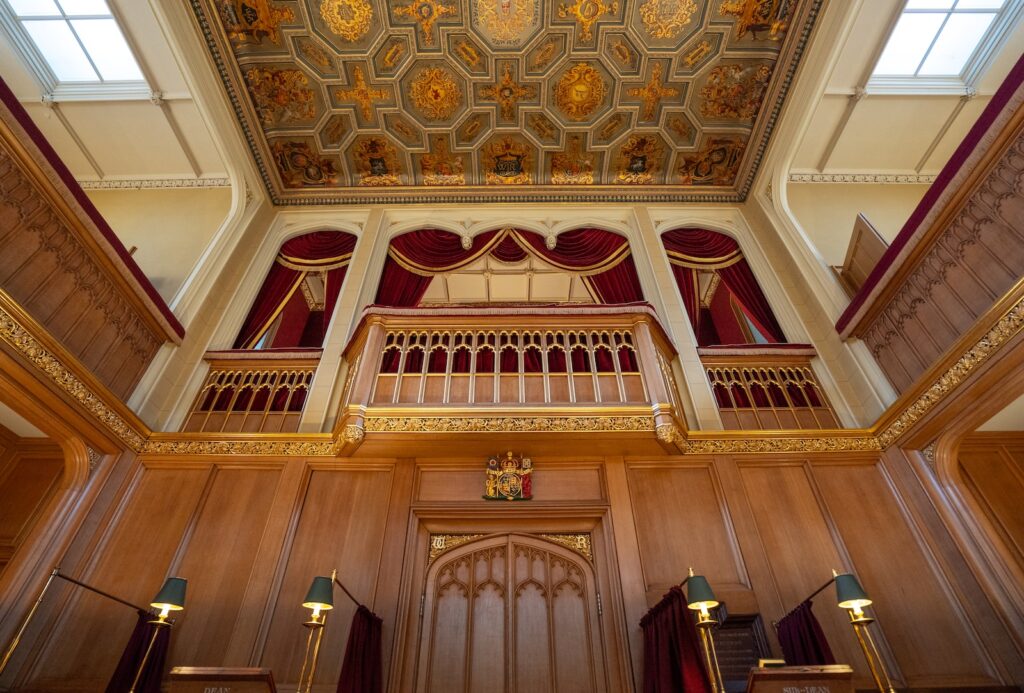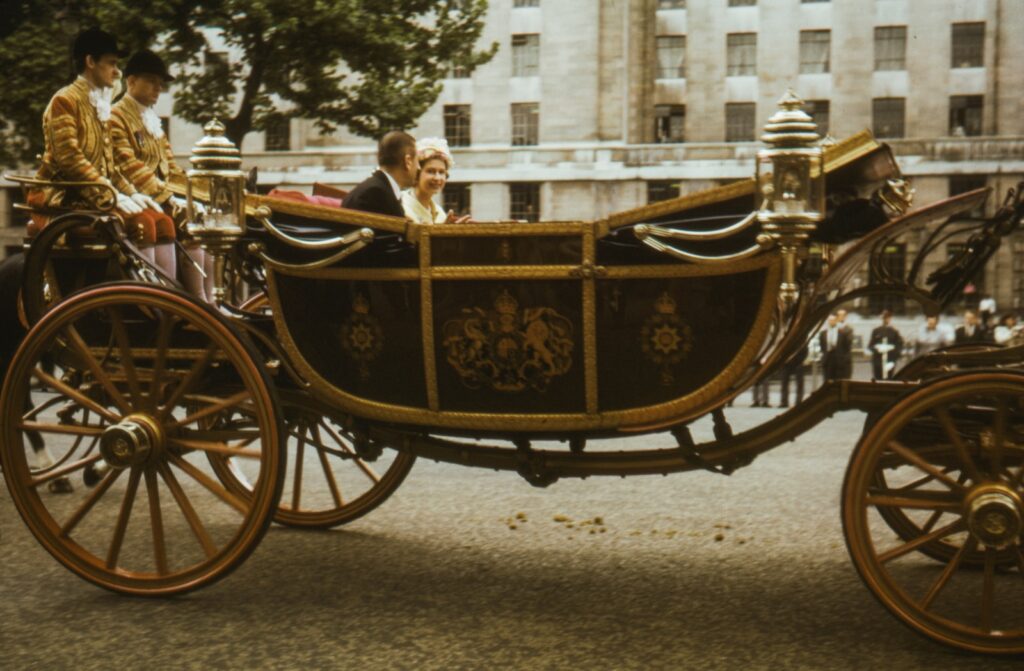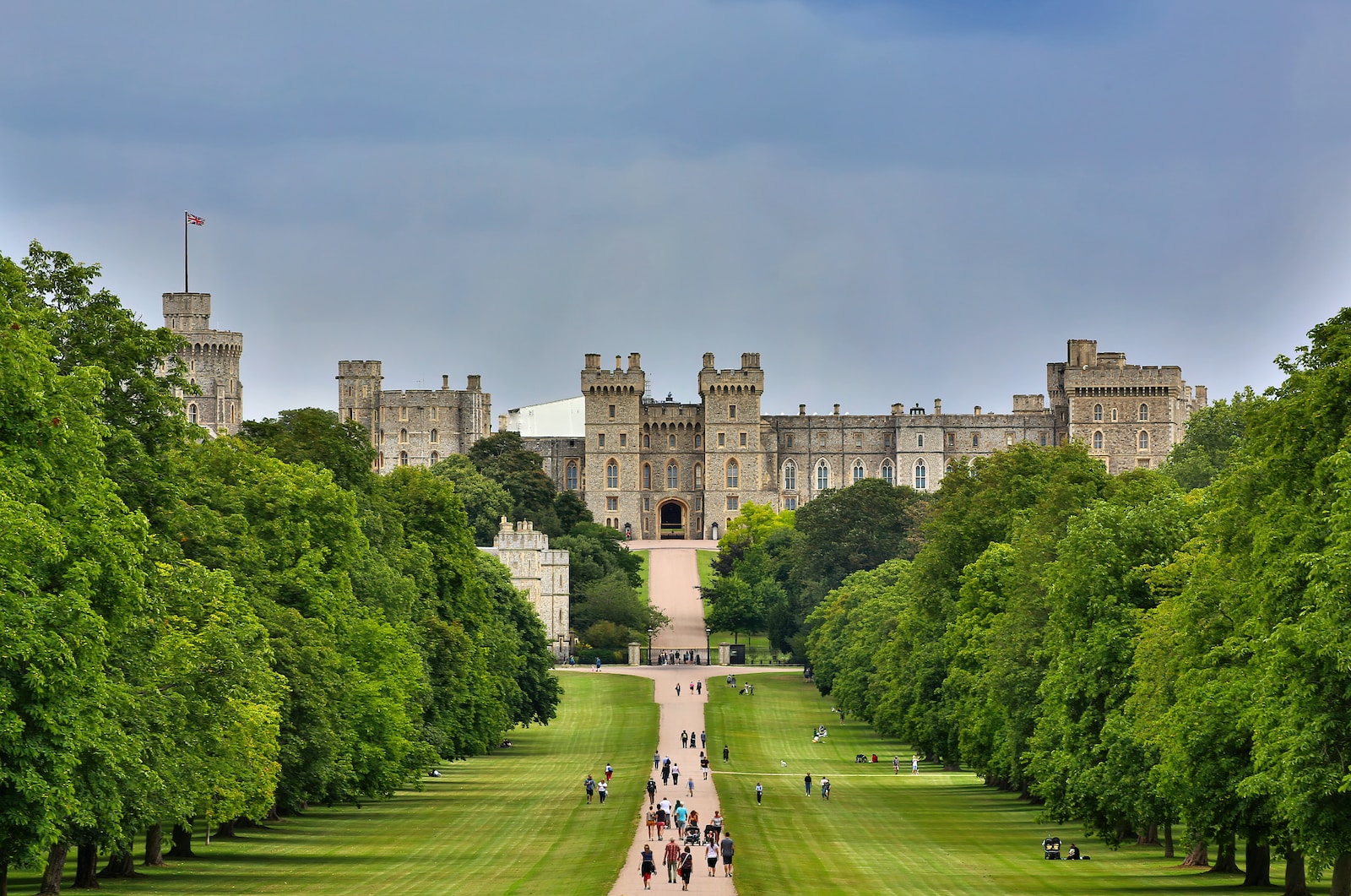Introduction
Welcome, dear reader, to a captivating journey through time, architecture, and royalty as we delve into the United Kingdom’s royal legacy. This heritage, painstakingly woven into the fabric of the nation over centuries, is a rich tapestry of majestic castles, palaces, and monarchs, each as fascinating as the last.
Our exploration takes us through the silent stone walls of iconic castles, into the luxurious grandeur of royal palaces, and alongside the lives of the monarchs who have shaped the United Kingdom to what it is today. These landmarks, like silent witnesses, tell tales of the past and present, and are coveted attractions that continue to allure tourists and locals alike.
Through this article, we aim to enrich your understanding of these historical edifices and the monarchs who resided within their walls. We will discover the allure of these architectural marvels, learn about the monarchs that have reigned, and reveal the indelible mark they have left on the nation.
Why should you care about the United Kingdom’s royal legacy?
Whether you’re a history buff, architecture enthusiast, or a casual traveler, the United Kingdom’s royal legacy has something to offer everyone. Consider this; if the UK’s history were a novel, the castles, palaces, and monarchs would undoubtedly be the most compelling characters. Their stories, filled with power, passion, and intrigue, are instrumental in shaping the nation’s identity.
Moreover, the beauty and grandeur of these landmarks are a testament to the architectural prowess of the eras they were built in. They are not just buildings; they are an artistic expression of the time they represent – a fusion of history, culture, and architecture that continues to enchant visitors.
What can you expect from this article?
- We will journey through the annals of the United Kingdom’s monarchy, tracing its origins, and evolution over the centuries.
- We will explore some of the most iconic castles, discussing their historical and architectural significance.
- We will step into the opulence of royal palaces, appreciating their architectural grandeur and delving into their histories.
- We will study the lives of notable monarchs, from their accomplishments to the controversies that have colored their reigns.
By the end of this journey, you will have a deeper understanding and appreciation of the United Kingdom’s royal legacy, one that goes beyond the surface-level fascination. So, let’s embark on this journey together, immersing ourselves in the story of power, architecture, and royalty. Let’s discover the United Kingdom’s royal legacy.
A Brief History of the United Kingdom’s Monarchy

As we embark on this journey through time, let’s delve into the annals of the United Kingdom’s Monarchy, a tale replete with power, passion, and prestige. The monarchy’s origins lie cloaked in the mists of time, with its history being an integral part of the tapestry that makes up the United Kingdom.
The onset of the Monarchy can be traced back to the early medieval period, around the 8th century, when independent kingdoms across the British Isles started to merge. The unification of England occurred in the 10th century under King Æthelstan, marking the dawn of a monarchy that has continuously evolved over the centuries.
Whether it was the tumultuous reigns of the Plantagenets, the consolidation of power under the Tudors, or the establishment of constitutional law under the Windsors, each era has left an indelible mark on the nation’s history and identity. The role of the monarch has seen significant transformations, from absolute power to a more symbolic role in the present day.
- Monarchs of Note: Notable monarchs have graced the throne since the monarchy’s inception. King Henry VIII, the Tudor monarch known for his six marriages and split from the Catholic Church, is one such figure. Queen Victoria, whose reign witnessed the expansion of the British Empire, was another influential monarch. In recent history, Queen Elizabeth II, the longest-serving current head of state, has also made her mark.
- Societal Impact: The monarchs have had a profound impact on society and governance in the United Kingdom. Their rule not only shaped the nation’s political landscape but also influenced culture, religion, and societal norms.
- Evolution of Power: The balance of power has significantly changed over the centuries. From wielding absolute power, the monarch now has a more ceremonial role, with the establishment of parliamentary democracy.
Despite the shifting sands of power, the monarchy remains a cornerstone of British identity. Today, the monarch’s role extends to ceremonial duties and lending an ear to the Prime Minister’s confidential briefings. They also play a crucial part in fostering national unity and continuity.
We can’t ignore the controversies and debates surrounding the monarchy. Yet, these discussions are part of the monarchy’s evolution, helping it adapt to the changing times. As we continue to assess the monarchy’s role in the 21st century, we can look back on its rich history and legacy, which have been instrumental in shaping the United Kingdom as we know it today.
Exploring the Iconic Castles of the United Kingdom

The United Kingdom is a land steeped in history, filled with awe-inspiring architectural marvels and tales of monarchs past. Its castles, in particular, hold a special place in the country’s rich history and cultural fabric. These timeless structures stand tall, embodying the UK’s royal legacy, projecting power, prestige, and a captivating charm that draws countless visitors each year from all corners of the globe.
From the stunning towering fortresses to the intimate residential castles, each one presents a unique story and an unforgettable experience. Here, we delve into some of the most iconic castles in the United Kingdom, which are nothing short of architectural masterpieces.
- Windsor Castle: The oldest and largest inhabited castle in the world and an official residence of the Queen, Windsor Castle epitomizes the elegance and grandeur of the British monarchy. With its imposing round tower, expansive state apartments, and lush, manicured gardens, the castle is a literal and metaphorical high point of any visit to the UK.
- Edinburgh Castle: Dominating the skyline of Scotland’s capital, the Edinburgh Castle is a potent symbol of the Scottish nation. It is a powerful and enduring reminder of Edinburgh’s past, and its thrilling history can be traced back to the Iron Age. From the dazzling Crown Jewels to the ancient Stone of Destiny, this castle is a treasure chest of national, royal, and architectural history.
- Warwick Castle: Nestled in the heart of England, Warwick Castle offers a real-life journey into the world of medieval England. It boasts impressive towers, ramparts, and interiors, complete with meticulously curated furniture and fittings that transport visitors straight back to the Middle Ages.
Each castle, with its own unique character and history, draws you into a world of knights, battles, romance, and intrigue. Yet, they’re more than just stone and mortar. They are living, breathing entities that continue to evolve and adapt, much like the monarchy they represent.
The architecture of these castles is just as fascinating as their history. From the sturdy defensive structures of Edinburgh Castle to the romantic gothic architecture of Warwick Castle and the grandeur of Windsor Castle, each castle reflects the architectural styles of the time they were built in.
So, whether you are a history buff, an architecture enthusiast, or just someone looking for a fascinating journey into the past, exploring the United Kingdom’s iconic castles will surely leave you mesmerized and inspired.
Discovering the Grandeur of Royal Palaces

Welcome to the realm of royal grandeur, where the echoes of monarchs past still resonate within the majestic halls of the United Kingdom’s magnificent palaces. These aren’t just buildings; they’re monumental canvases on which history has been painted, each brick whispering tales of bygone eras.
First and foremost, we must embark on a virtual tour of the Buckingham Palace, the Queen’s official residence. Originally built as a townhouse for the Duke of Buckingham in 1703, it has evolved over the centuries into the grand palace that stands today.
With an impressive 775 rooms, including 19 state rooms, 52 royal and guest bedrooms, 188 staff bedrooms, 92 offices, and 78 bathrooms, the scale of Buckingham Palace is a testament to the grandeur of the monarchy.
Next on our palace parade is the Hampton Court Palace. It was the favorite residence of King Henry VIII – a fact that might be surprising given that it was originally built for his advisor Cardinal Wolsey. Over the years, it became a symbol of the King’s power and authority. Its iconic features include the Great Hall, the Chapel Royal, and a vast labyrinthine garden, all of which narrate fascinating chapters of English history.
- Great Hall: This was the heart of the palace, where grand feasts were held underneath a beautifully decorated hammer-beam roof.
- Chapel Royal: One of the most stunning chapels in England, it has witnessed many significant royal events, including the christening of King Edward VI.
- Gardens: Spread over 60 acres, they’re home to the world’s oldest puzzle maze – a perfect metaphor for the complex intrigues of the Tudor Court.
Our royal journey wouldn’t be complete without visiting Kensington Palace. Known as the birthplace and childhood home of Queen Victoria, it’s currently the London residence of the Duke and Duchess of Cambridge (aka Prince William and Kate Middleton). The palace’s Sunken Garden, with its vibrant flower beds surrounding a peaceful pond, is a sight to behold.
- Sunken Garden: Inspired by a 17th-century design, it’s a tranquil oasis that’s home to a menagerie of fascinating flora, including tulips, pansies, and forget-me-nots.
The architecture, art, and history of these palaces offer insight into a different era, providing a window into the lives of those who’ve walked their resplendent halls. Each palace is a treasure trove of stories, some whispered quietly in the silence of their stone walls, others told boldly through the palaces’ opulent design and décor.
As we end this tour, remember the grandeur of these royal palaces is not just in their size or opulence, but also in the stories they tell – of kings, of queens, of the kingdom’s history, and of a legacy that continues to shape the United Kingdom’s cultural landscape.
The Fascinating Lives of United Kingdom’s Monarchs

Like a captivating book filled with fascinating stories, the lives of the monarchs of the United Kingdom are a blend of duty, power, and at times, controversy. From the medieval kings and queens to the present-day rulers, these figures have shaped history and continue to capture global attention.
Their lives, both personal and official, are woven into the fabric of the nation’s identity. Monarchs are not merely figureheads, but critical players, shaping the country’s progress and image.
- King Henry VIII: Known for his six marriages and his role in the separation of the Church of England from the Catholic Church. His reign saw significant legal and social reforms.
- Queen Victoria: Her reign, known as the Victorian era, was a period of significant industrial, cultural, political, scientific, and military changes within the United Kingdom. She became a national icon, and the symbol of the British Empire.
- Queen Elizabeth II: The longest-reigning current monarch, her reign has seen significant changes, from technological advancements to shifts in public attitudes toward the monarchy. She is known for her dedication to duty and her role in modernizing the monarchy.
While their roles have evolved over time, their impact remains profound. The controversies they faced- be it political, personal, or both, have often rocked the nation but also led to significant changes and reforms.
- King Henry VIII’s break with the Catholic Church sparked religious reform and solidified the power of the monarchy.
- Queen Victoria’s reign saw the expansion of the British Empire, making the United Kingdom one of the world’s leading industrial and naval powers.
- Queen Elizabeth II’s reign has been marked by efforts to modernize the monarchy and make it more accessible to the public.
The modern monarch’s role in society goes beyond their constitutional duties. They also serve as an important symbol of continuity and stability. They help define the country’s image internationally and play a key role in national events and ceremonies.
However, the allure and mystique surrounding these figures are not just about their power or influence but also about their human side. Their hobbies, personal interests, and family life often fascinate the public as much as their official duties.
From King Henry VIII’s famed love for music and sports to Queen Elizabeth II’s love for corgis and horse racing, these personal anecdotes add a layer of relatability and intrigue to the sometimes inscrutable world of monarchy.
The lives of the United Kingdom’s monarchs, filled with grandeur, duty, and personal passions, continue to be a source of fascination, offering a glimpse into the country’s rich history and culture.
The Legacy of United Kingdom’s Monarchy
Steeped in centuries of tradition and heritage, the monarchy in the United Kingdom has had a profound impact on the nation’s culture and identity. From defining the country’s architectural landscape with majestic castles and palaces to shaping societal norms and values, the influence of the monarchy is inextricably woven into the fabric of the United Kingdom.
The monarchy’s tangible legacy is perhaps most notably seen in the grandeur and architectural mastery of the United Kingdom’s palaces and castles. These structures, such as the iconic Windsor Castle and Buckingham Palace, serve not just as residences but as potent symbols of the nation’s historical narrative and power. They stand as testament to the monarchy’s enduring presence and cultural significance.
- Traditions and Ceremonies: A major part of the monarchy’s legacy is the multitude of traditions and ceremonies that punctuate the British calendar. Events like the Changing of the Guard, the State Opening of Parliament, and the annual Trooping the Colour are deeply ingrained cultural ceremonies that continue to draw locals and tourists alike.
- Constitutional Role: The monarchy has played a key role in the evolution of the country’s constitution and governance. Monarchs like King John, who signed the Magna Carta, and Queen Victoria, who oversaw vast constitutional changes, have significantly shaped the nation’s democratic landscape.
- Cultural Influence: The monarchy has also significantly influenced British culture, from fashion trends to popular TV shows. The Royal Family continues to capture the public imagination, generating worldwide interest and tourism.
However, the monarchy’s legacy is not without debate. Modern society has seen increasing discussions about the relevance of the monarchy in today’s democratic age. Issues like the cost of maintaining the monarchy, their role in politics, and their public image are hotly debated topics. Yet, despite these debates, the monarchy’s historical and cultural significance remains undeniable.
The future of the monarchy in the United Kingdom is a fascinating topic. While it is impossible to predict with certainty, it is likely that the monarchy will continue to evolve in response to societal changes and public opinion. What remains constant is that the legacy of the monarchy, with its rich tapestry of history, tradition, and culture, will undoubtedly continue to be an integral part of the United Kingdom’s identity.
- The monarchy is more than just a symbol: It has played a pivotal role in shaping the United Kingdom’s history and continues to have a significant influence on its cultural, political, and social landscape.
- Engage with the monarchy: One can truly appreciate the legacy of the monarchy by visiting the castles and palaces, participating in royal ceremonies, and understanding the historical context and significance of these traditions.
In conclusion, the monarchy’s legacy in the United Kingdom is a captivating blend of history, culture, power, and tradition. It continues to shape the country’s identity and attracts millions of visitors each year, eager to experience a piece of this enduring royal legacy.
Uncovering Hidden Gems: Lesser-Known Castles and Palaces
While the grandeur of Windsor Castle and Buckingham Palace is truly remarkable, exploring the United Kingdom’s royal legacy would be incomplete without a detour into the less trodden but equally majestic locales. This section shines a light on lesser-known castles and palaces that are an essential part of the country’s regal history and architectural splendor.
St. Michael’s Mount is a charming discovery nestled on a tidal island in Cornwall. The castle, which is enveloped in a rich tapestry of myth, legend, and over a thousand years of history, offers a unique blend of religious, military, and residential features. The captivating gardens designed in harmony with the steep granite cliffs are a testament to human resilience and creativity.
Next on our list is Tintagel Castle
- Perched high on the North Cornwall coast, this castle is steeped in Arthurian legend. It is said to be the birthplace of King Arthur himself, lending an air of mystique to the ruins.
- The castle is a testament to the power of nature with its dramatic sea views, rugged landscapes, and enchanting beach caves.
- Visitors are also treated to a rich wildlife habitat, with a diverse array of flora and birds to spot.
Moving on, we delve into the grandeur of Blenheim Palace. Unlike the other castles, Blenheim is a relatively recent masterpiece, built in the early 18th century. It is a marvel of Baroque architecture and is famously known as the birthplace of Sir Winston Churchill. A few standout features of this palace include:
- The Long Library, boasting over 10,000 books and an exquisite organ.
- The Great Hall with its towering 67-foot high ceiling.
- The expansive and meticulously landscaped gardens designed by the legendary ‘Capability’ Brown.
Each of these hidden gems holds its own allure, offering insights into a royal life less publicized. They are imbued with stories of triumph, tragedy, and time, silently echoing the footsteps of those who walked their corridors and gardens. They may not be as famous as their counterparts, but their historical significance and architectural beauty make them worth a visit.
Intrigued? This is just the tip of the iceberg. The United Kingdom is dotted with such lesser-known treasures waiting to be discovered. So, the next time you’re planning a trip, step off the beaten path and dive into a world of untold stories, rich history, and unparalleled beauty, hidden in the heart of the United Kingdom’s royal legacy.
Conclusion
As we have traversed through the enthralling narrative of the United Kingdom’s royal legacy, the unparalleled importance of its historical castles, grandiose palaces, and influential monarchs become indisputable. This rich tapestry woven by centuries of monarchy adds a unique allure to the United Kingdom, a magnetism that continues to enchant both locals and tourists alike.
The history of the United Kingdom’s monarchy is a captivating journey that took us from its nascent stages, through centuries of evolution, to its present form. The role of the monarchs, their responsibilities and influence on governance and society, has been an enlightening discovery.
The potent narratives of the most notable monarchs in the country’s history, their accomplishments, and controversies, only serve to fortify this legacy.
In our exploration of the iconic castles of the United Kingdom, we delved into the architectural marvels and strategic importance of Windsor Castle, Edinburgh Castle, and Warwick Castle. Each of these structures carries unique stories, features and, most importantly, a slice of the country’s royal past.
The grandeur of royal palaces, such as Buckingham Palace, Hampton Court Palace, and Kensington Palace, provides a glimpse into the opulence and artistry associated with the royal lifestyle.
The lives of the United Kingdom’s Monarchs present a fascinating study of power, privilege, duty, and occasionally, scandal. Their contributions, both past and present, shape the country’s image, while their lifestyle continues to draw global attention.
Moreover, the legacy of the United Kingdom’s monarchy imprints itself on the country’s culture, traditions, and tourism. The ongoing debates regarding the monarchy’s role in modern society indicate its relevance even today. The future of the monarchy in the United Kingdom, although uncertain, promises to be an intriguing path to follow.
Uncovering Hidden Gems: Lesser-Known Castles and Palaces
Perhaps, one of the most exciting aspects of this exploration is the uncovering of hidden gems, like St. Michael’s Mount, Tintagel Castle, and Blenheim Palace. These lesser-known landmarks hold unique features and stories that are worth exploring. Going off the beaten path to discover these unspoiled facets of the United Kingdom’s royal legacy is an adventure in itself.
To truly understand and appreciate the enduring appeal and significance of the United Kingdom’s royal legacy, one must experience these landmarks firsthand. It is an invitation to step into the pages of history, to walk the corridors of power, and to live, if only for a few hours, the royal dream.
As we conclude this exploration, let’s remember that every castle, every palace, and every monarch has contributed a verse to the anthemic poem that is the United Kingdom’s royal legacy.

